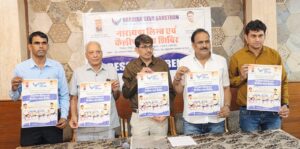
Recent events have cast doubt on the reliability of Google Maps, with concerns mounting over its safety and accuracy. One tragic incident, in particular, has fueled this skepticism. A car traveling from Gurgaon to Bareilly, guided by Google Maps, mistakenly drove onto an incomplete bridge and plunged into the Ramganga River, resulting in the loss of three lives.
This tragedy has sparked widespread debates about the effectiveness of Google Maps, prompting many users to explore alternative navigation tools like Mappls, India’s indigenous app.
The Gurgaon-Bareilly accident is not an isolated case. Several instances have surfaced where Google Maps led users onto incorrect routes, some of which ended in accidents and even fatalities. These incidents raise critical questions about the app’s reliability, despite its global ubiquity. For millions of travelers, navigation apps are indispensable, but the recurring concerns suggest a growing need to explore safer, more dependable alternatives.
Developed by MapmyIndia, Mappls is emerging as a viable alternative to Google Maps. Designed with a deep understanding of India’s unique road networks, it offers features tailored to the needs of Indian users, making it a robust and reliable choice.
One of the standout qualities of Mappls is its superior grasp of India’s intricate and ever-changing road network. Unlike Google Maps, which relies on global data, Mappls focuses on India’s evolving infrastructure. It regularly updates its maps with the latest information on highways, expressways, and local streets, ensuring accurate navigation even on newly developed or lesser-known routes.
Mappls enhances user experience by supporting multiple Indian languages. This feature allows users to access directions in their preferred language, making the app more inclusive and user-friendly. It ensures seamless navigation for people from diverse linguistic backgrounds, bridging language barriers in a country as culturally rich as India.
In a country where internet connectivity can be unreliable, Mappls offers a crucial advantage—offline navigation. Users can download maps in advance and navigate without an internet connection. This feature is especially useful in remote or rural areas where data access is limited, ensuring that users are never stranded without guidance.
Mappls goes beyond simple navigation by providing detailed local information. It alerts users to potholes, road construction, toll plazas, fuel stations, and even ATMs along the way. This depth of information empowers users with a more comprehensive understanding of their routes, enhancing both safety and convenience.
Tailored specifically for Indian users, Mappls offers real-time updates on traffic, road conditions, and construction work. Its localized approach ensures that users receive relevant, up-to-date information, making it a practical tool for navigating India’s diverse and often unpredictable road conditions.
Mappls leverages NavIC (Navigation with Indian Constellation), a satellite navigation system developed by the Indian Space Research Organization (ISRO). This indigenous technology provides highly accurate and real-time data tailored to India’s geographical and infrastructural needs, making Mappls a uniquely Indian solution.
Given the growing concerns about Google Maps’ reliability, particularly in light of recent incidents, Mappls presents a compelling alternative. Its focus on local accuracy, offline capabilities, and user-centric design make it an attractive choice for those seeking a safer, more dependable navigation tool.
For travelers prioritizing safety and accuracy in navigating India’s complex terrain, Mappls offers a reassuring solution. Its commitment to providing precise, localized information makes it a worthy contender in the navigation app landscape, especially for those wary of the risks associated with Google Maps.







